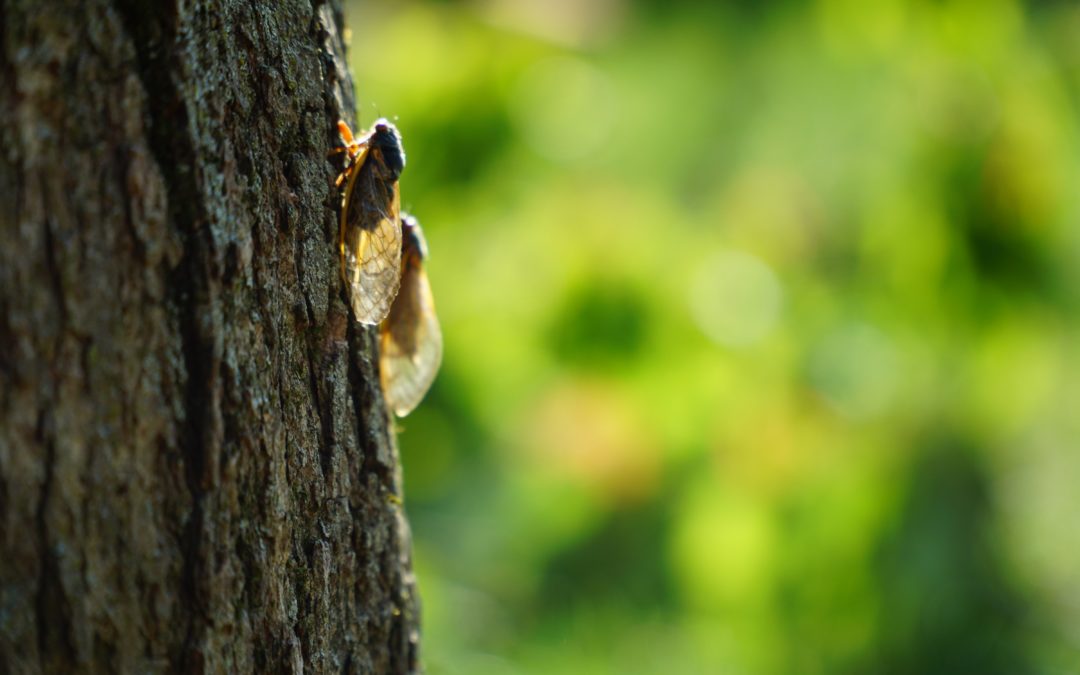If you haven’t heard it on the news, then you’ve definitely heard these creatures every time you step outside – the cicadas. Every 17 years, these noisy tree-loving creatures emerge from the ground. When this happens, they cover just about every tree possible and, in some places, they even take over the entire ground! One of the first questions asked with their arrival is this – How can I protect my trees from cicadas?
For anyone who puts time and effort into taking care of their yard or landscape, this is an important question. It’s no secret that cicadas flock to trees when they emerge, but not everyone knows exactly what they’re doing up there. We’re here to shed some light on the situation.
The Truth About Cicadas
Cicadas don’t pose harm to your trees in the way you think. When these little creatures come up from the ground, they aren’t looking for food. Instead, they come up to mate and lay eggs in trees. When a female cicada lays eggs, it’s called “flagging” a tree. She has this sharp, metal appendage on her abdomen that is used to break open the bark of a branch or twig. Here she will lay about 20 of her 400 eggs. This means she will be making about 20 of these slits during her lifetime. (Now multiply that by about 1.5 million cicadas per acre …)
Why every 17 years? Well, they aren’t very good at hiding and escaping predators – they can’t really fly, have no armor, and are very loud. So, rather than putting themselves in dangerous situations all the time, the cicadas only come up in giant herds. This tactic is a sure way to ensure that at least some of them survive. It’s called Predator Satiation.
How Can You Protect Your Trees From Cicadas?
The most important thing to note is that you should not use pesticides to get rid of cicadas.
- Plan ahead when planting new trees. Older trees are at a lower risk for serious harm because their branches are already strong. Trees that are newly planted and still growing have a higher risk because their branches are still very young and fragile.
- Prevent cicadas from crawling up into the new trees by wrapping the trunks and canopy in netting. The best size for netting is anything smaller than 1/4 inch or 0.5 cm. Make sure that you tightly fasten the netting to the trunk so that there is no chance of the cicadas being able to climb under and get on your tree. This also works well for bushes.
- After the cicadas are gone, you can do a little post-cicada damage control by pruning your trees. Clipping off the branches that have been cut up by these creatures will help your trees remain healthy.
Get Help Protecting Your Trees
JC Tree Care can assist in your tree care needs. We are able to give advice when it comes to the best practices when protecting your trees from cicadas. In addition to that, we are also available for tree pruning services after they are gone. Don’t let your trees fall victim to the Brood X cicadas.

